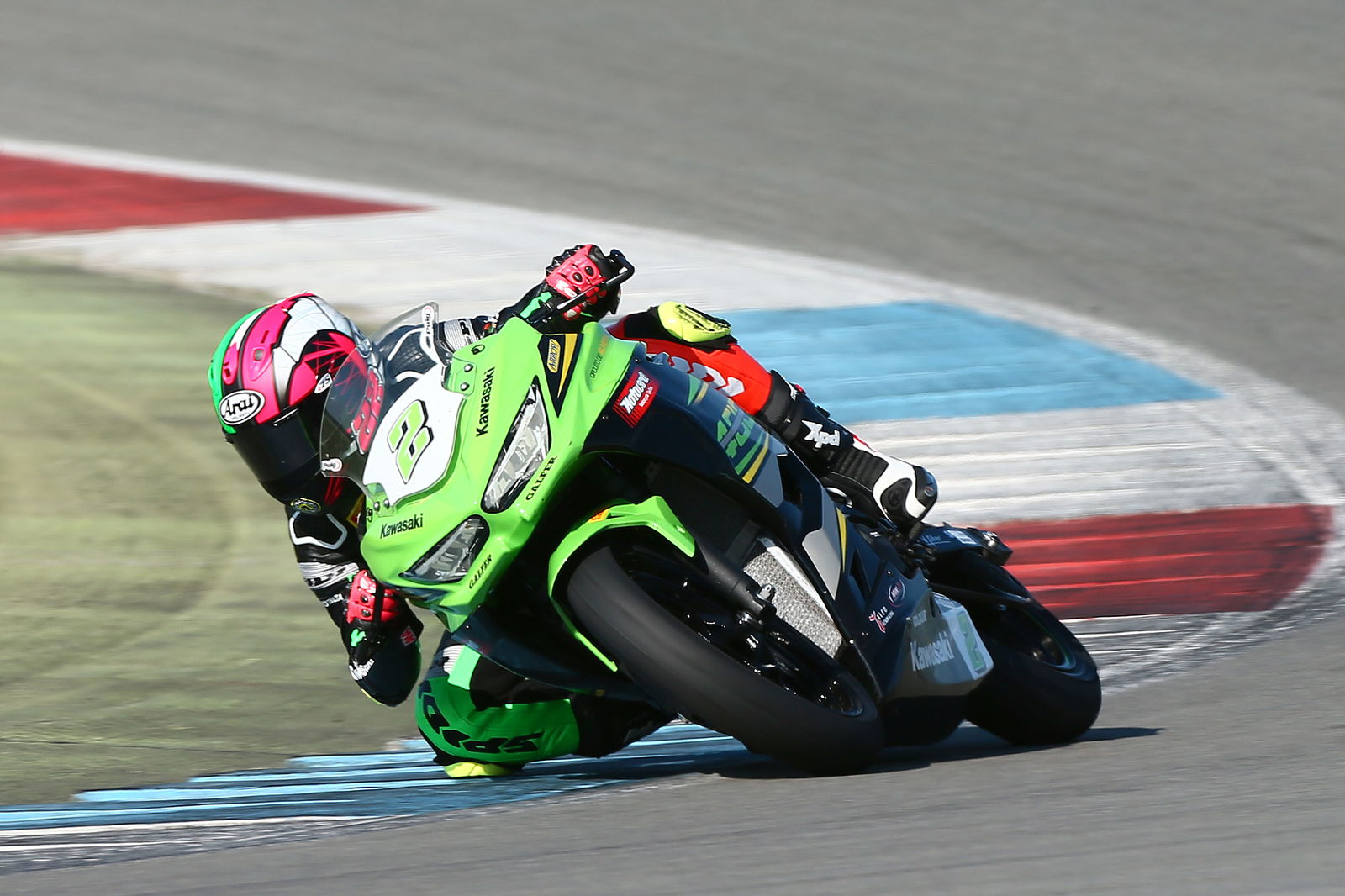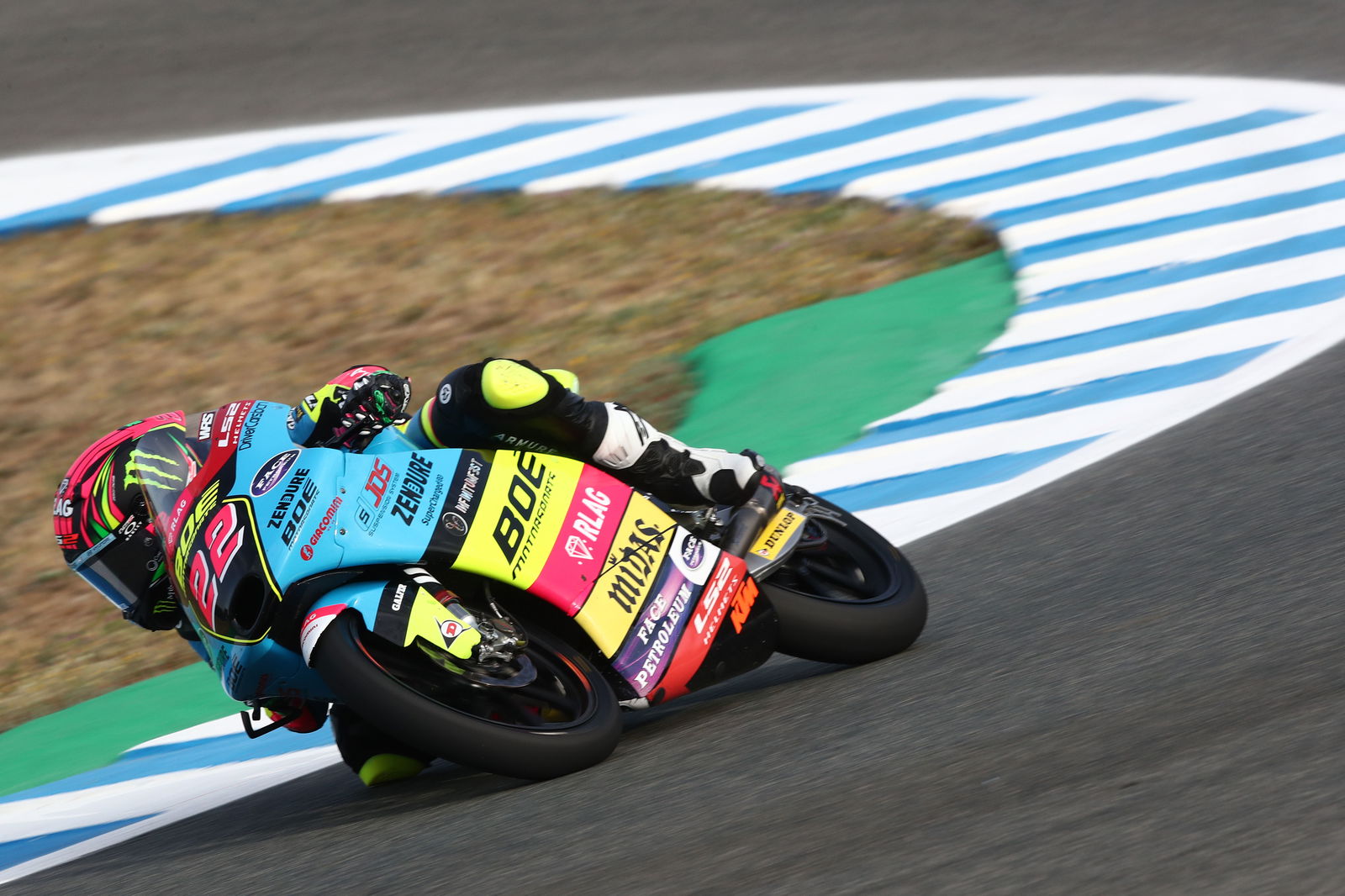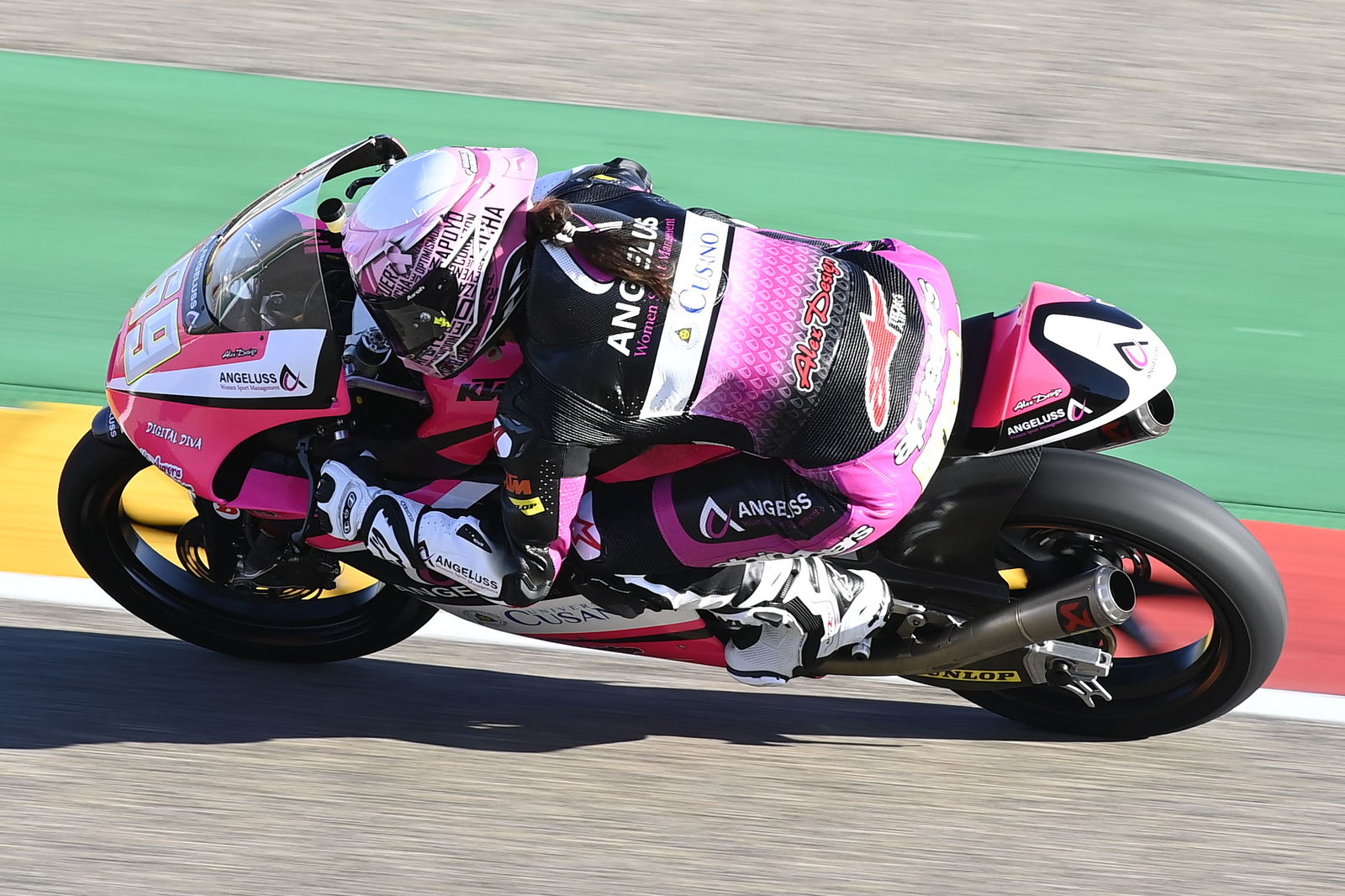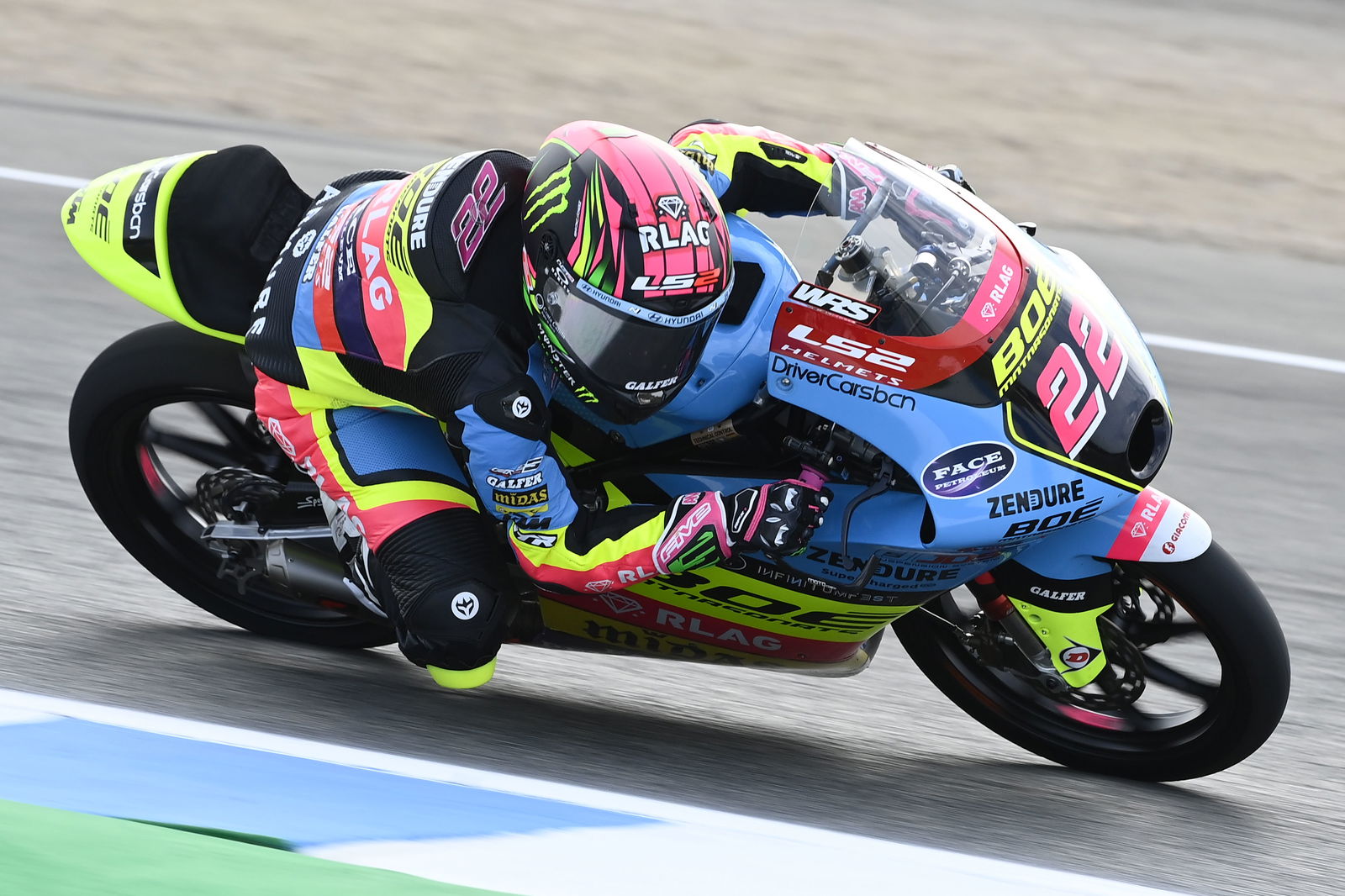New FIM Women's World Championship announced for 2024
The new FIM Women's World Championship will begin in 2024 as a European-based single-make support series to the WorldSBK championship.

The FIM Women’s World Championship, that will begin in 2024, has been announced at the MotoGP Spanish Grand Prix.
The new FIM Women’s Motorcycling World Championship will begin next year and will race as a support category at the European rounds of WorldSBK.

The season is expected to start at the first European round of WorldSBK in 2024, and will run for approximately six races.
There is not yet a great amount of detail available about the finalities of the championship, in terms of where they will race, how women can enter the championship, at what point in the weekend the race will be held, which bikes will be used, or how much support the riders will receive.
What is certain is that it will be a one-make series running in Europe with bikes which Gregorio Lavilla, WorldSBK Executive Director, said in the press conference announcing the series will have a performance level “close to Supersport.”

That should mean bikes such as the Yamaha R7, Aprilia RS 660, and Kawasaki Ninja 650 are all in the window to be chosen as the sole bike of the championship.
Also present in the press conference, held during the MotoGP Spanish Grand Prix weekend, were FIM President Jorge Viegas, Dorna CEO Carmelo Ezpeleta, and FIM CEO Francoise Emery.
Additional thoughts, comparison to F1 Academy & the need for patience
Both Lavilla and Viegas described the championship as a “final destination” for women riders, as opposed to a “promotional cup,” like the series of Dorna-backed Talent Cups in Britain, Europe and Asia, or the Red Bull MotoGP Rookies Cup, for example. This means that the FIM and Dorna has taken the opposite approach to women-only racing compared to Formula One, the FIA, and Liberty Media, whose F1 Academy races its first round this weekend.
F1 Academy, like the W Series which went before it, is a series aimed at helping women drivers get to F1. The new FIM Women’s Motorcycling World Championship seems to instead be being promoted as the place for women riders to aspire to reach.
One benefit to this way of thinking is that women in the Women’s World Championship should be able to be professionals within that championship, and make a living from racing it. This was a point made by Viegas, who also made sure to note that there will be no restrictions placed on women wishing to enter open-gender, or non-women-only, categories (a relief considering the previous success of riders like Ana Carrasco and Maria Herrera), and, no question, it would be a good thing if there were 20 or more women making a living from racing in the championship.

On the other hand, promoting the championship as a “final destination” for women perhaps also makes the suggestion that women motorcycle racers require a different career target to their men counterparts, and in this case that target is using motorcycles with lower performance than the second tier of WorldSBK.
It is no bad thing to have a championship dedicated to getting more women racing motorcycles and having a greater number of those racing women getting paid to do so, but it would be a shame if that championship also discouraged women from trying to reach the pinnacle of their sport, and the pinnacle of motorcycle racing, at least from a performance perspective, will continue to be, objectively, MotoGP.
As was pointed out by both Viegas and On Track Off Road’s Adam Wheeler, the new short circuit road racing series will not be the first FIM Women’s World Championship. Similar series’ also exist in motocross, enduro, and trials, and the Women’s European Cup (which Viegas views as the final step before reaching the inbound Women’s World Championship) is racing this weekend in Misano.
One argument that could be put against the series is that it is entering too far up the motorcycle racing chain. When the W Series started in 2019, they were trying to put women racing drivers in F3 cars, but the number of women racing drivers at the level to drive F3 cars was relatively small; the gaps in performance between the top drivers and the ones further down was therefore quite large, and there were drivers who were making their way up the motorsport ladder racing people who had essentially come out of retirement to compete in the W Series.

A 650cc-800cc twin-cylinder production bike might not be at the same performance level as an F3 car, but there may be a similar problem, which is that the pool of women riders who can ride one fast enough to be considered ‘world championship worthy’ might prove to be quite small, and the difference in performance between the top of that pool and the bottom might prove to be quite large.
The difficulty is that fixing this requires intervention at the bottom, at the entry-level. To get more women racing at World Championship level, you need more girls to be racing minibikes, so maybe that is where to focus.
On the flip side, there is the ‘representation’ argument that says more women racing motorcycles on the TV at a World Championship event will be seen by more young girls who will then want to go minibike racing, thus creating that larger pool of riders further up the chain when those girls progress from minibikes and kart tracks to full-size motorcycles on full-sized tracks.
Then you have the question of patience. Going back to car racing and the W Series, that championship ran in 2019, missed 2020, and was back for 2021 and most of 2022, so ran two-and-three-quarter seasons. Yet, there seemed to be a discontent by the end of last year that there were no women yet in F1.

The reality is the process is much longer than that. None of the women racing W Series or the women racing F1 Academy are good enough to be in F1. Jamie Chadwick, who was the dominant driver in all three seasons of W Series, has gone to race the Indy NXT (pronounced “next”, formerly Indy Lights, the junior series for IndyCar) series for Andretti Autosport in the US this year. She qualified second-last and finished the race in 13th, 75 seconds behind the winner, having sustained damage on the first lap at the season-opening round in St. Petersburg, Florida.
This weekend is the second round of Indy NXT, and Chadwick was second-last in first practice. At the second round of the IndyCar series at Long Beach, Kyle Kirkwood set pole position and won the race, becoming only the third driver to win an IndyCar race having won the Indy Lights/NXT title, which Kirkwood himself won in 2021 with Andretti Autosport.
F1 teams generally don’t view IndyCar champions as good enough to race in F1. For Chadwick to go to Indy NXT and struggle so considerably (albeit very early in her time in the US) is not a fantastic advert for her potential to be an F1 driver, and therefore not a fantastic advert for the potential of the drivers she beat so comfortably so often in W Series, many of whom are now racing F1 Academy, in the same context. That does not mean that Chadwick or her former W Series rivals are failures or bad racing drivers, just that they might not have what it takes to be at the top of F1 (which can also be said about much of the current, all-men F1 grid).
The point of all that horrible, dull car racing talk is to say that there has to be a level of patience if your target is to have women racers in the pinnacle series of your discipline. Starting to promote women in racing in this way now is an objectively good thing and should really have been done much sooner. However, it is not going to make results overnight. There is not going to be a woman F1 champion or MotoGP champion by 2026 because of this new women’s series, but there might be one in 2036, or 2046.
It seems hard to believe that the ultimate target of trying to increase the number of women motorcycle racers is not to have women racing in WorldSBK and MotoGP eventually, even if right now the Women’s World Championship is seen as a “final destination” by Viegas and Lavilla. Certainly, this should be the aim, or at least the hope, it just remains to be seen whether Dorna and the FIM have the patience to see their initiative yield such a result.

